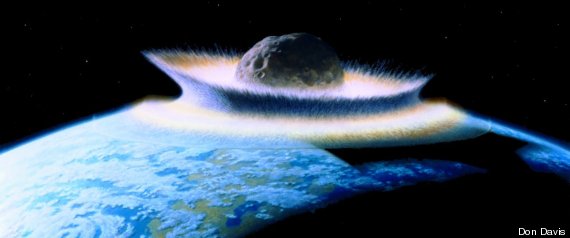Such a system would issue international warnings about possible impending strikes and educate the public about the threats posed by near-Earth objects. It also would call government leaders' and the public's attention to the scientific value and potential economic importance of asteroids. Coming up with international guidelines of this sort would not be easy, since nothing of its kind has been done before, write the authors of the report, which was issued by the nonprofit Secure World Foundation. "Today no worldwide disaster-notification protocol of any kind exists. The closest analogy might be the cooperative early-warning system developed for tsunamis in the wake of the devastating inundation of the coasts of Southeast Asia in 2004," the report states. It is being presented this week to the United Nations Committee on the Peaceful Uses of Outer Space during a conference in Vienna. [Natural Disasters: Top 10 U.S. Threats]
Communicating the risk
The report summarizes the findings of a meeting convened last November by the Secure World Foundation and the Association of Space Explorers. That meeting concentrated on helping a United Nations team develop a proposed Information, Analysis and Warning Network, or IAWN, for near-Earth objects. The rationale behind pushing the IAWN proposal is simple: Colossal asteroid strikes, which have pummeled Earth fairly regularly over its 4.5 billion years, know no international borders. If a threatening near-Earth object (NEO) comes onto scientists' radar, the whole world will need to know and they'll need to know what, if anything, they should do in response.

Scientists have identified nearly 9,000 near-Earth asteroids and believe lots more are out there. Many different teams of astronomers around the world are hunting for them and keeping tabs on the ones that have been found. The warning network would help streamline and consolidate many of these efforts, the report says. "The IAWN has an essential role in a global response to the NEO hazard," it states. "Essentially, it would comprise the functions and activities already being carried out by the Minor Planet Center, the National Aeronautics and Space Administrations (NASA) NEO Program Office, and Europes Near Earth Object Dynamic Site (NEODyS) program."
The system also would serve to keep laypeople, including lawmakers, abreast of the latest asteroid findings and threats. "Another key component of IAWN is education and outreach, to relay information on NEO hazards and implications to the public and policymakers," the report says. "This information will generally serve to alter the general view that the cosmos has little effect on humanity here on Earth, by explaining the consequences of a NEO impact on our home planet." [Photos: Asteroids in Deep Space]
Planting the seed
